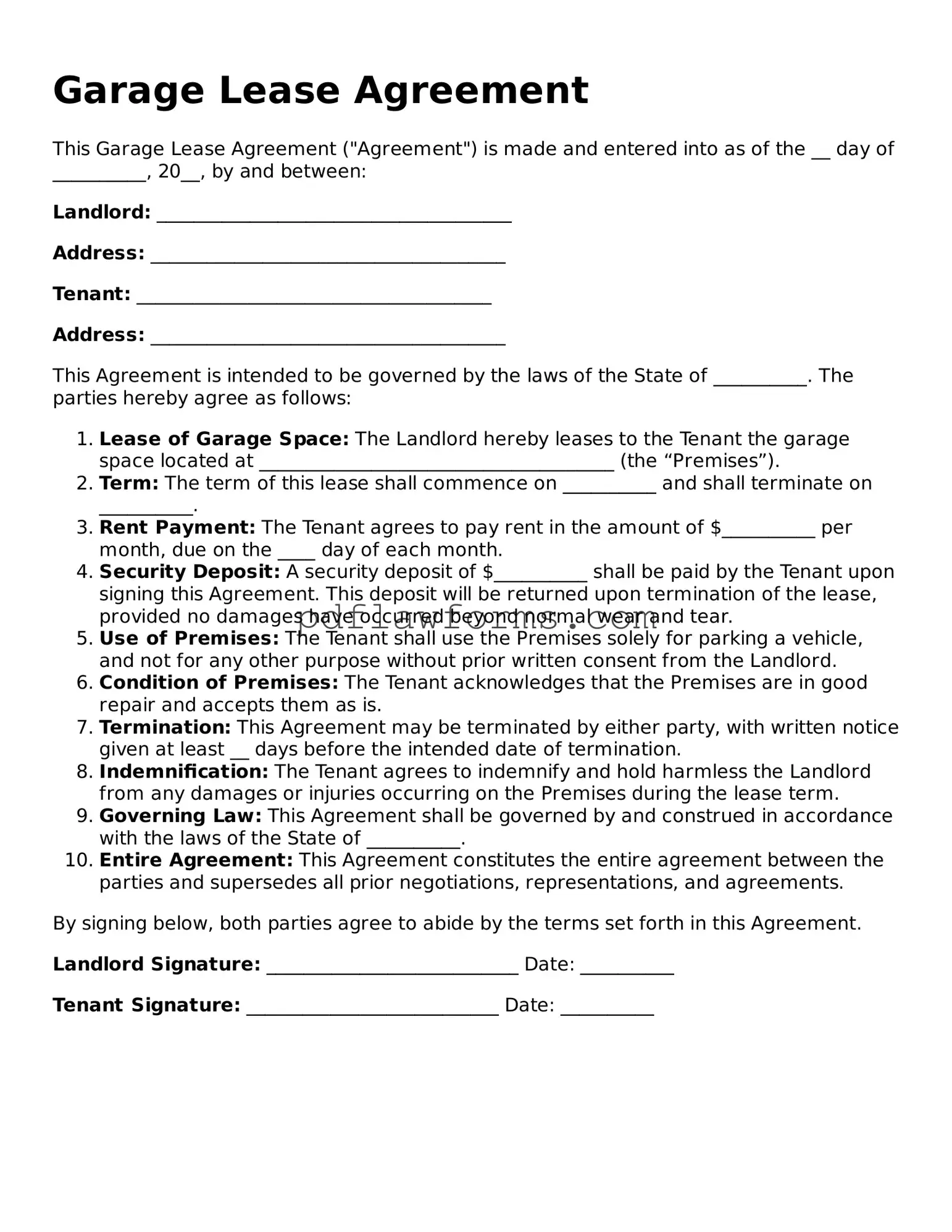When filling out a Garage Lease Agreement form, it's easy to make mistakes that can lead to confusion or disputes later on. One common error is failing to include the correct names of the parties involved. Always ensure that the names of both the landlord and tenant are spelled correctly and match the identification documents.
Another mistake is neglecting to specify the rental term. Clearly state the start and end dates of the lease. Without this information, it can become unclear when the agreement begins and ends, leading to potential misunderstandings.
People often forget to outline the rental amount. It's essential to include the exact monthly rent and any additional fees. This prevents disputes over payment expectations. Additionally, be sure to indicate how and when the rent should be paid.
Some individuals overlook the importance of detailing the security deposit. Specify the amount required, the conditions for its return, and any deductions that may apply. This clarity helps avoid disagreements when the lease ends.
Another frequent oversight is not including the rules and regulations regarding the use of the garage. Clearly outline what is allowed and what is not. This can include restrictions on storage, maintenance responsibilities, and access to the garage.
People sometimes fail to provide contact information for both parties. Including phone numbers and email addresses ensures that communication remains open and straightforward throughout the lease term.
Additionally, many individuals forget to review the form for completeness before submitting it. Double-checking all entries can catch errors or omissions that could lead to complications later.
Lastly, some may not consider having the agreement reviewed by a legal professional. While it might seem unnecessary, a quick review can save significant trouble down the line. It ensures that all terms are fair and legally sound.
